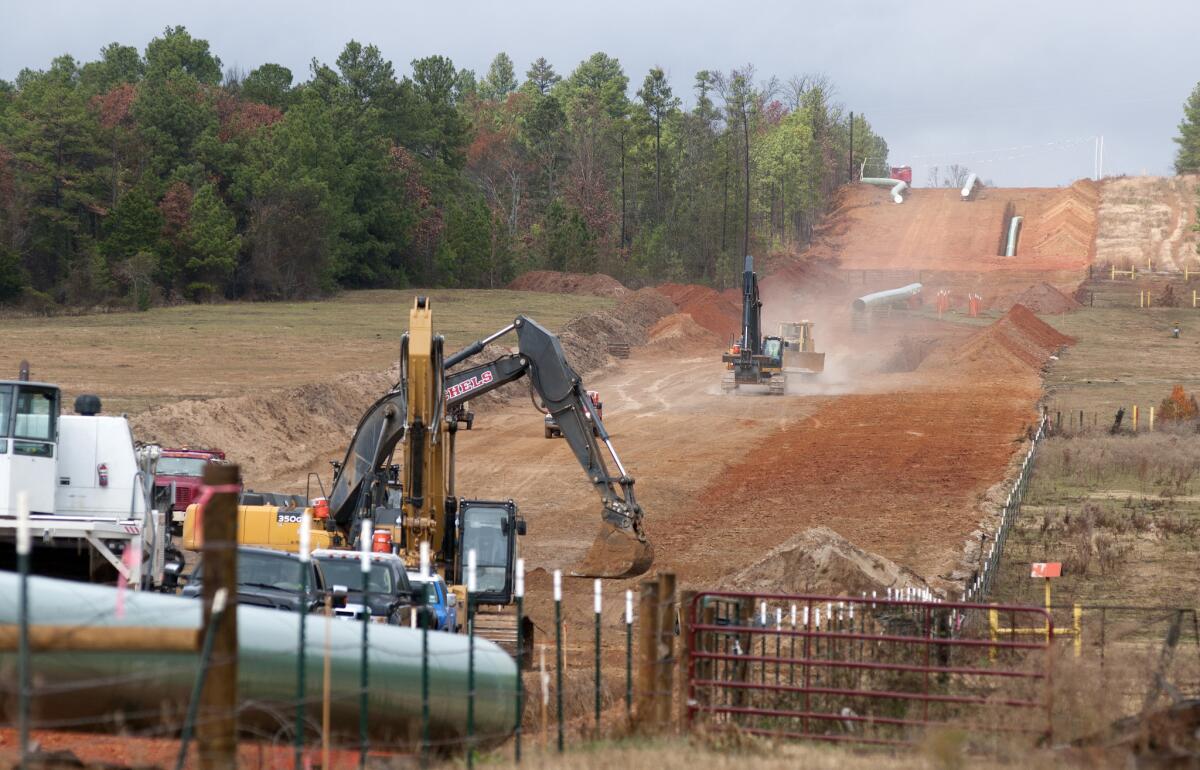Keystone XL could mean more carbon emissions than estimated, study says

Building the Keystone XL pipeline could lead to as much as four times more greenhouse gas emissions than the State Department has estimated for the controversial project, according to a new study published in Nature Climate Change that relies on different calculations about oil consumption.
Emissions of heat-trapping carbon dioxide became central to the Obama administration’s review of a federal permit for Keystone XL, after the president announced in June 2013 that he would let the project proceed only if “it does not significantly exacerbate the problem of carbon pollution.”
The study’s authors based their calculation on the premise that increased supplies of petroleum through the pipeline would push down global oil prices marginally, and that would lead to an increase in consumption and thus pollution.
“We find that for every barrel of increased production, global oil consumption would increase 0.6 barrels owing to the incremental decrease in global oil prices,” the study said.
In its environmental impact statement issued in February, the State Department estimated that the Keystone XL pipeline, which would ultimately carry 830,000 barrels of oil daily, could increase emissions of heat-trapping greenhouse gases by 1.3 million to 27.4 million metric tons annually.
The new study estimates that emissions could be 100 million to 110 million metric tons every year, “or four times the upper State Department estimate,” the authors wrote.
“The sole reason for this difference is that we account for the changes in global oil consumption resulting from increasing oil sands production levels, whereas the State Department does not,” wrote authors Peter Erickson and Michael Lazarus, scientists based in Seattle with the Stockholm Environment Institute, a nonprofit research organization.
TransCanada, which owns the Keystone XL project, defended the State Department’s assessment. “The credible analysis and the conclusions of the U.S. State Department, the International Energy Agency and leading energy experts have repeatedly shown that Keystone XL will not materially impact [greenhouse gas] emissions or influence global energy demand,” spokesman Shawn Howard said.
Howard added that “a single pipeline carrying less than 1% of the world’s daily oil production is not the key driver of global oil consumption. Economic activity and world events - like we see playing out in the Middle East today - have far more of an impact on oil consumption and global prices than a single pipeline does.”
The institute’s study acknowledges the impact that a range of events have on oil prices. But the authors said the effect of other global forces “doesn’t necessarily undermine the potential market and [greenhouse gas] emissions impact of Keystone XL itself, which we analyzed using standard economic tools that are widely accepted.”
The $5.3-billion pipeline would run from Hardisty, Alberta, to Steele City, Neb., where it would tie into a southern leg that has already been built and that runs to refineries along the Texas Gulf Coast.
Because the project crosses a United States border with Canada, it needs a federal permit.
The State Department concluded in the final environmental impact statement that Keystone XL would not lead to greater greenhouse gas emissions because it would not spur a marked increase in production of petroleum from Alberta’s oil sands.
The State Department determined that increased rail capacity and other proposed pipelines would deliver the oil even if the pipeline were not built.
Though rail usage is growing, it remains a more expensive option. Further, other proposed pipeline projects from Alberta to the East and West coasts have been slowed by local resistance.
Last month, the city of South Portland in Maine voted to ban the export of crude oil from its waterfront, effectively barring the possibility of reversing the flow of an existing import pipeline into Canada to ship crude out of the country.
In June, the Canadian Assn. of Petroleum Producers issued an annual outlook that scaled back projections for growth in oil sands output, in part because of delays in pipeline projects, including Keystone XL.
The slowdown seems to contradict the State Department’s conclusion that green-lighting Keystone XL would have little effect on production, and with it the emissions that stoke climate change.
In April, the Obama administration said that it would delay its decision on granting a permit to the pipeline because of a Nebraska state court decision that invalidated part of the project’s route. The Nebraska state Supreme Court will review the case in the fall.
More to Read
Sign up for Essential California
The most important California stories and recommendations in your inbox every morning.
You may occasionally receive promotional content from the Los Angeles Times.






